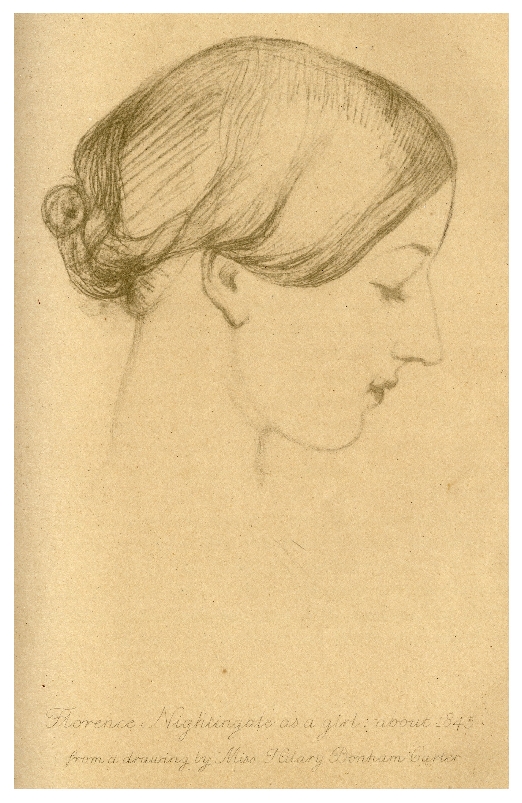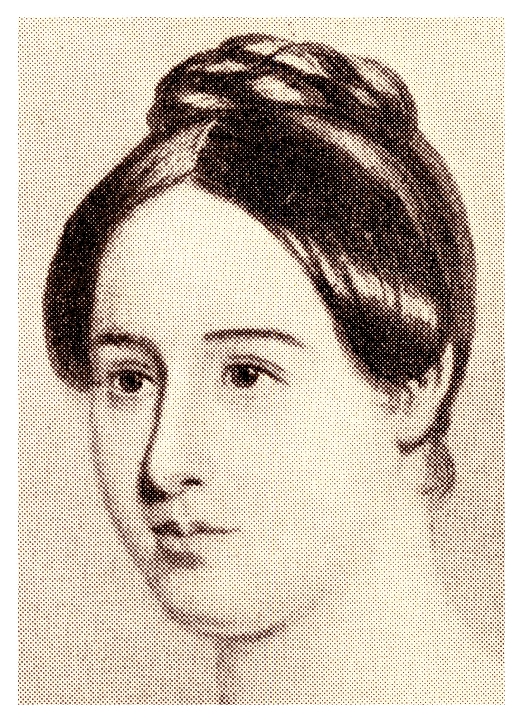
The 13th August 2010 marks the 100th anniversary of the death of Florence Nightingale. Florence was an English nurse who became famous while looking after injured soldiers during the Crimean War.
Florence was from an upper-class Victorian family and was frustrated by her sheltered upbringing. She wanted to pursue an education and aged sixteen she felt a calling from God to become a nurse. In the Mid-Nineteenth Century nursing was an occupation on a par with domestic service and her parents were horrified by her decision. Undeterred she went to Germany to carry out her training.
At the same time anger was mounting about the suffering of British soldiers fighting in the Crimean War. Florence was sent to Scutari in Turkey to head a team of female nurses. In letters home, she described the appalling conditions. Four times as many were dying from infection and disease as in battle. The death rates were high until the Sanitary Commission arrived and flushed out the sewers upon which the hospital was built.
As head nurse, Florence ran a tight ship. She instilled discipline in her nurses and introduced uniforms and a strict curfew. She also took on tasks that went beyond her duty, but increased her popularity with the soldiers, such as writing letters of condolence to relatives and setting up a banking system that allowed soldiers to send money home.
However, Florence Nightingale the woman and Florence Nightingale the legend were two very different people. The legend was born on 24th February 1855, when the Illustrated London News published an engraving of her holding a lamp in a hospital ward while tending to injured soldiers.
The public couldn’t get enough of the story of the beautiful, caring young woman who was risking her life in a warzone. An industry sprung up producing statuettes, figurines and posters, mainly by artists who had never seen her! Songs and poems were written describing her efforts in tending for the sick and the dying soldiers. The media frenzy was so great that when Florence arrived back in England in August 1856, she had to travel under the pseudonym Miss Smith, so that she could return to her family home without drawing attention!
Florence, however, detested her celebrity status. She felt that the legend that had been created around her hid what she was trying to achieve. The idea of fame was different in the 19th Century – it was associated with criminals and travelling entertainers so it is not surprising that Florence didn’t exactly bask in it.
However, it was the Florence of legend that allowed the real Florence to make the changes she had dreamt of. Government ministers were aware of her popularity and felt they couldn’t refuse her. Using public money donated in her honour, she set up the Nightingale School for nurses. In 1860 her Notes on Nursing, which advised ordinary women on how to care for relatives, became a bestseller. She used her fame to campaign for reforms in many areas of health and throughout her life wrote 200 books, pamphlets and articles, and more than 14,000 letters, campaigning for improvements until her death.

Florence’s experience of unwanted fame echoes that of an earlier Victorian heroine, Grace Darling. Grace grew-up on the Farne Islands where her father was a lighthouse keeper. On 7th September 1838, along with her father, she saved nine people from the wreck of the SS Forfarshire. The ship had crashed on the rocks and in the early hours of the morning Grace spotted the wreck and survivors from the lighthouse. She and her father took a rowing boat across to the wreck and Grace kept it steady while her father helped the survivors in.
News of the rescue was reported by the local newspapers who cast Grace in a heroic light. The myth began to take shape as journalists competed to create the most exciting account of events. It was reported that Grace was awoken by the cries of the survivors, which would have been an impressive feat given the noise of the gale-force wind blowing outside at the time, as her sister Thomasina later commented! It was also suggested that Grace forced her father to take the boat out regardless of the risks. It is highly unlikely that Grace would have disobeyed her father and in turn William Darling, an experienced seaman, would never have taken such a chance if he felt their own lives would be at risk.
The media frenzy which surrounded Grace was akin to that which we associate with modern-day celebrities. But with a young girl as Queen the press wanted female heroines. Soon her image could be found on trinkets, plates, postcards, chocolates and even soap boxes! Even William Wordsworth wrote a poem about her in 1843. Grace received letters requesting locks of her hair and scraps of the dress she wore during the rescue. Pressure also came from the Victorian paparazzi; the portrait artists. In a letter to the press five weeks after the rescue, her father requested that other painters take their likenesses from one of the seven paintings already completed!
Grace’s story became popular as it fitted in well with the romanticism of the Victorian period. All of the elements, the fact that she lived on a remote island, was beautiful and obedient and had such an angelic name, created an enchanting story. Fiction writers would have struggled to create a character that embodied the ideal Victorian woman in the way that Grace did.
A number of books were written about Grace. Grace Darling, or the Maid of the Isles by Jerrold Vernon, gave birth to the legend ‘of the girl with windswept hair’. This is particularly amusing as Grace went out in the boat with her hair in curling-rags! It could be argued that it was the ordinariness of Grace’s life as a lighthouse keeper’s daughter, which led to the creation of the myths. Journalists felt they had to invent stories about Grace to ensure she lived up to her reputation as a heroine.
Tragically, Grace died of tuberculosis in 1842, aged 26. However, the Grace Darling story continued long after her death. If she had married and grown old, she would no longer have been the girl of the legend. Through her untimely death she was immortalised as the brave and beautiful heroine she never wanted to be.
